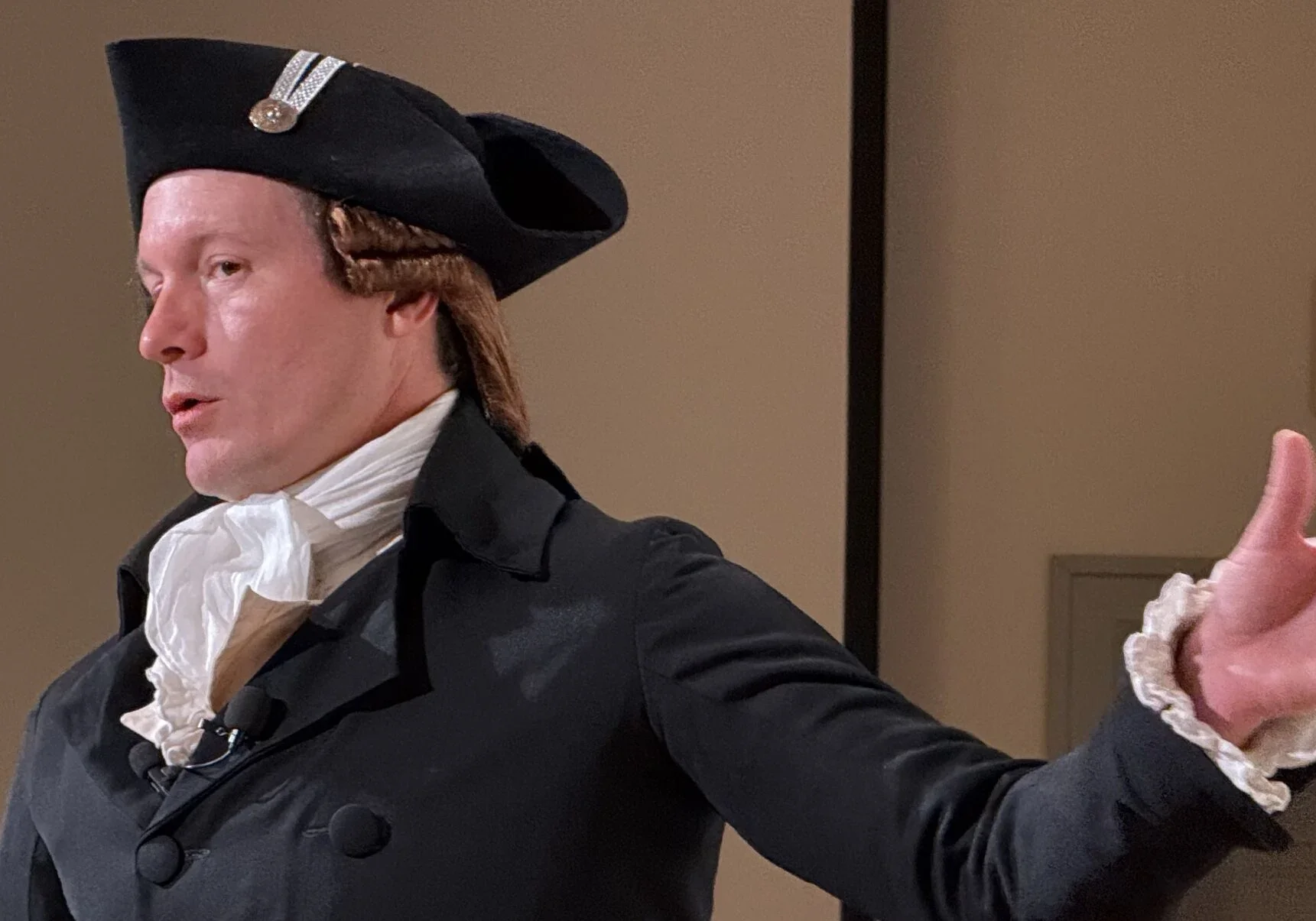Col. Tench Tilghman
Born on Christmas Day 1744 on his father’s plantation at “Fausley,” just two miles from what is today Easton in Talbot County on Maryland’s Eastern Shore, Tench Tilghman was the eldest of ten children of James and Anne (Francis) Tilghman.
Constitution celebrated in Easton
The Colonel Tench Tilghman Chapter of the Maryland Society of the Sons of the American Revolution and The Mid-Shore Constitution Alliance sponsored a celebration of the fourth annual Constitution and Citizenship Day hosted at the Academy Art Museum in Easton on Sept. 17.
Celebrating Constitution Week with Talbot250
Each September, Americans commemorate Constitution Week — a time to honor the 1787 signing of the United States Constitution and reflect on the principles that continue to shape our nation. This year, Talbot250 is marking the week by sharing the voices of our own community leaders.
Constitution Day Event to Host Historical Reenactors
The Mid-Shore Constitution Alliance will host their annual celebration of Constitution Day and Citizenship Week on Wednesday, September 17. Renowned actors Darius Wallace as Frederick Douglass and Kurt Smith as Thomas Jefferson will be featured, performing a conversation between the two. The event will be held from 4:30-6:00PM at the Academy Art Museum in Easton. Admission is free.
With Valor and Honor’ Commemorates Talbot’s Black Civil War Troops by Eric Mills
Maryland has long been touted as “America in Miniature,” and while that venerable tourism-boosting label refers to geographical diversity, the Maryland-as-microcosm description perfectly encapsulates the Old Line State during the Civil War. Perched on the faultline of a nation ripped in two, Maryland was home to North America’s largest free Black population, but it also was home to a vociferous secessionist element and had a slaveholding governor (pro-Union but pro-slavery Thomas Holliday Hicks of Dorchester County) at the war’s outset.
Tilghman Island: Events of Interest Happening There in 1899
The following article was first published in the Gazette, June 2, 1899. The article was contributed by Tilghman Watermen’s Museum.
The Rich History of the Talbot County Fair
Summer is here, and across Maryland, farmers and young exhibitors are bringing the best of their best into the show ring and the judging tent. County and state fairs have been a cornerstone of American agriculture for more than 200 years, celebrating the skills, dedication, and traditions that connect communities to the land. From prize-winning livestock to homegrown produce and handcrafted projects, these fairs highlight the hard work that goes into every season.
A Tale of 3 Pages: Talbot County and Maryland’s Student Page Program
The Constitutional Convention Commission was created in 1965 by then Governor J. Millard Tawes to determine the need for constitutional revision. It was convened in Annapolis in September 1967 and adjourned in January 1968. The proposed constitution was rejected by voters the following May.
While the Constitutional Convention (colloquially known as “ConCon”) may not have produced a constitution acceptable to voters, its use of student pages provided a model for the Maryland General Assembly Student Page Program, now in its 55th year.










